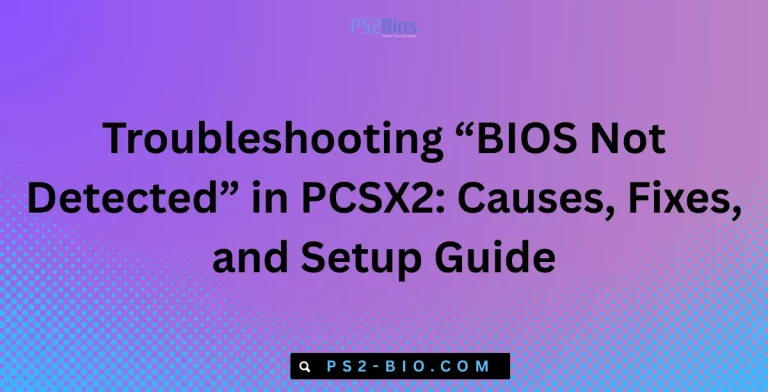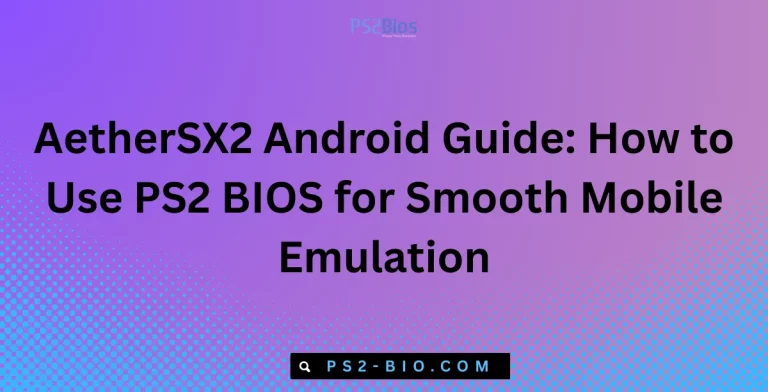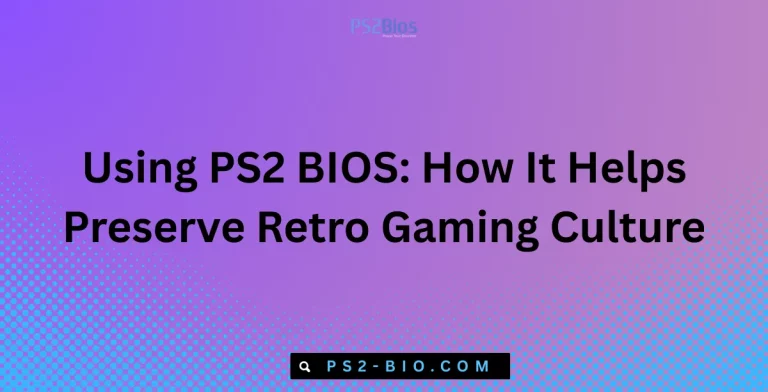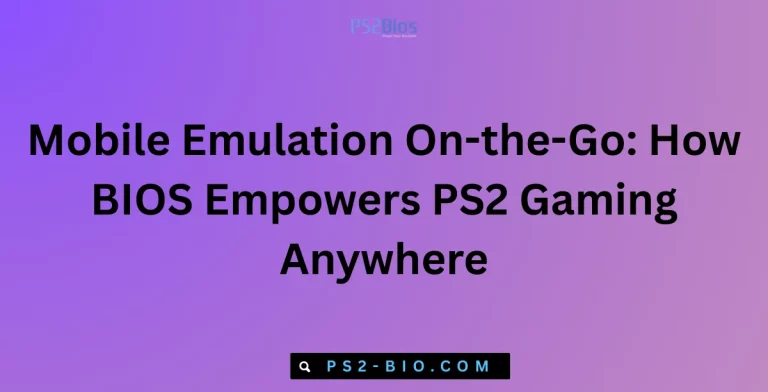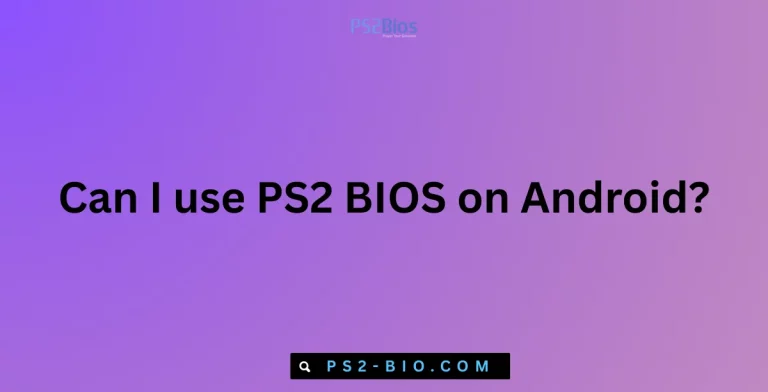Real-World Use Cases: Restoring Old PS2 Game Saves with BIOS
Have you ever wondered why XBSX2 Xbox emulation and the PS2 BIOS are often discussed together when talking about console emulation changes? The shift in how developers build, optimize, and integrate BIOS files with emulators highlights a major transformation in gaming preservation and performance.
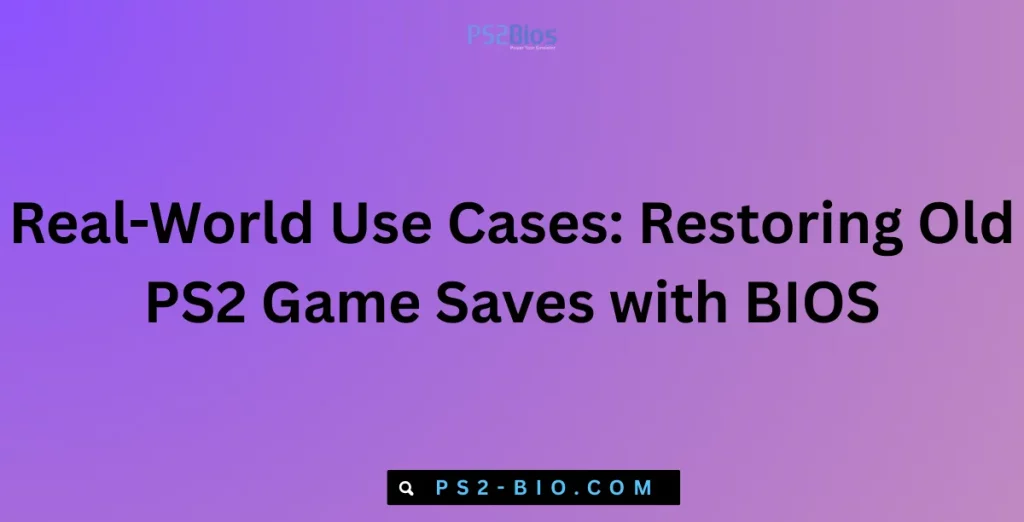
What Is Xbox Emulation (XBSX2)?
XBSX2 is an open-source emulator designed to run original Xbox and Xbox 360 games on modern hardware. Built on advanced recompilation and GPU translation, it allows users to play titles once locked to aging consoles.
Unlike early emulators, XBSX2 focuses on accurate hardware-level reproduction. It translates Xbox system calls, memory instructions, and GPU outputs into processes that a modern PC or console can interpret. This makes it possible to run commercial games at stable frame rates, something earlier emulation attempts failed to deliver consistently.
Key features of XBSX2 include:
- Dynamic recompilation for faster CPU instruction processing.
- DirectX and Vulkan support for improved graphical rendering.
- High compatibility layer that supports a growing number of Xbox titles.
- Save states and patch support for modifying games.
The project represents a major leap forward for Xbox preservation, especially since Microsoft never released official tools for running original Xbox software outside its hardware.
What Is PS2 BIOS?
The PlayStation 2 BIOS (Basic Input/Output System) is the firmware responsible for initializing the PS2 hardware and handling fundamental operations. Without it, no emulator can accurately mimic the console.
In PCSX2, the most widely used PS2 emulator, the BIOS is mandatory for running games. It contains critical instructions for:
- Booting the PS2 console.
- Authenticating game discs.
- Handling memory card management.
- Loading the user interface.
Because it is Sony’s intellectual property, the PS2 BIOS cannot be legally distributed with emulators. Users are required to dump the BIOS from their own PlayStation 2 hardware. This distinction is crucial because it ensures compliance with copyright law while still enabling legal preservation of games.
How Xbox Emulation and PS2 BIOS Intersect
While they represent different consoles, XBSX2 and PS2 BIOS reflect the same challenge: preserving gaming systems beyond their hardware lifespans.
- Xbox Emulation relies on reverse-engineering system calls, which is legal as long as no copyrighted BIOS code is distributed.
- PS2 Emulation requires the actual BIOS file, which means users must extract it themselves.
Both highlight the tension between intellectual property rights and community-driven preservation. Developers must carefully balance accurate emulation with legal frameworks to avoid infringement.
What Changed in Xbox Emulation (XBSX2)?
Over the past decade, Xbox emulation has moved from experimental to practical. Key changes include:
- Improved CPU Emulation
Early Xbox emulators struggled with the Pentium III-based CPU architecture. XBSX2 introduced dynamic recompilation, allowing instructions to run closer to native speed. - Better GPU Translation
Xbox’s NV2A GPU was notoriously difficult to emulate. With Vulkan and DirectX 12 support, XBSX2 now renders complex titles more accurately. - High Game Compatibility
In 2010, fewer than 20% of Xbox titles were playable. Today, compatibility lists show over 65% of the library can boot and run with varying performance. - Community Contributions
Open-source development allowed programmers worldwide to improve accuracy, add patches, and fix long-standing bugs.
These changes made Xbox emulation usable for general players rather than only developers or enthusiasts.
What Changed in PS2 BIOS and Emulation?
For the PlayStation 2, the BIOS itself has not changed—Sony’s firmware is fixed to original consoles. However, emulator usage of the BIOS has evolved significantly:
- Enhanced BIOS Handling in PCSX2
PCSX2 now interprets BIOS calls more efficiently, reducing lag and boot errors. - Wide BIOS Region Support
Earlier versions required region-specific BIOS files. Now, emulators support multiple regions, letting users run Japanese, European, and U.S. titles seamlessly. - Integration With Game Fixes
PCSX2 developers integrated BIOS-level fixes for certain titles, reducing graphical errors without requiring manual patches. - 64-bit and Multithreading Support
The shift from 32-bit to 64-bit emulators allows BIOS calls to run faster, especially on modern processors.
These advancements significantly improve performance, compatibility, and user experience without altering the BIOS itself.
Comparing XBSX2 and PS2 BIOS in Emulation Progress
| Aspect | Xbox Emulation (XBSX2) | PS2 Emulation (PCSX2 + BIOS) |
|---|---|---|
| Core Dependency | No official BIOS required (reverse-engineering) | Requires dumped BIOS from PS2 hardware |
| Main Challenge | GPU emulation and API translation | Legal use of BIOS and region-specific behavior |
| Compatibility | Over 65% playable titles | Nearly 98% compatibility with PS2 library |
| Performance | Still developing; many titles run smoothly but not all | Highly polished, stable across most hardware |
| Preservation Role | Revives Xbox’s limited software library | Keeps PS2’s massive library playable on modern systems |
Why These Changes Matter for Gamers
The Xbox library was far smaller than the PS2’s massive catalog of over 3,800 titles. Without emulation, many Xbox exclusives risked being lost forever. Improvements in XBSX2 ensure that games like Jet Set Radio Future and Panzer Dragoon Orta remain accessible.
For PlayStation 2 fans, improved BIOS handling in PCSX2 means better performance, less stuttering, and near-complete compatibility. This ensures that even niche titles and region-locked games remain playable without the original hardware.
Legal and Preservation Challenges
Both XBSX2 and PS2 BIOS-based emulation operate within legal gray areas:
- PS2 BIOS must be legally dumped from owned hardware. Distributing BIOS files online violates copyright law.
- XBSX2 avoids this issue by not requiring Xbox BIOS dumps, but reverse engineering must stay within fair use and non-infringing boundaries.
Preservation groups and emulation developers argue that without these efforts, hundreds of titles would be lost to hardware decay. The Video Game History Foundation reports that 87% of classic video games are currently out of print, making emulation one of the only practical methods of preservation.
The Future of Console Emulation
Looking ahead, both Xbox and PS2 emulation will benefit from:
- Faster hardware enabling higher accuracy without performance drops.
- AI-powered upscaling to enhance textures and visuals.
- Cross-platform compatibility allowing emulators to run on handhelds, macOS, and Linux.
- Community-driven fixes ensuring even rare or obscure titles achieve full playability.
The continued growth of projects like XBSX2 and PCSX2 ensures that future generations can experience the cultural and technological history of these consoles.
FAQ’s
Q1: Do I need a PS2 BIOS to run PCSX2?
Yes, a legally dumped PS2 BIOS is mandatory for PCSX2 to boot and run games.
Q2: Is XBSX2 legal to use?
Yes, the emulator itself is legal, but downloading copyrighted Xbox game files without ownership is illegal.
Q3: Can I dump my own PS2 BIOS?
Yes, using tools like BIOS dumper utilities, you can extract the BIOS directly from your PS2 hardware.
Q4: Does XBSX2 support Xbox 360 games?
Currently, XBSX2 primarily focuses on original Xbox titles, though some work has been done to improve limited Xbox 360 compatibility.
Q5: Which has better game compatibility, XBSX2 or PCSX2?
PCSX2 with PS2 BIOS achieves nearly full compatibility, while XBSX2 is still improving, covering a growing but smaller portion of the Xbox library.
Conclusion
The evolution of XBSX2 for Xbox emulation and the PS2 BIOS in PCSX2 demonstrates how much emulation has matured. Xbox emulation overcame GPU and instruction-level challenges through reverse engineering, while PS2 emulation refined BIOS handling for near-perfect compatibility.

